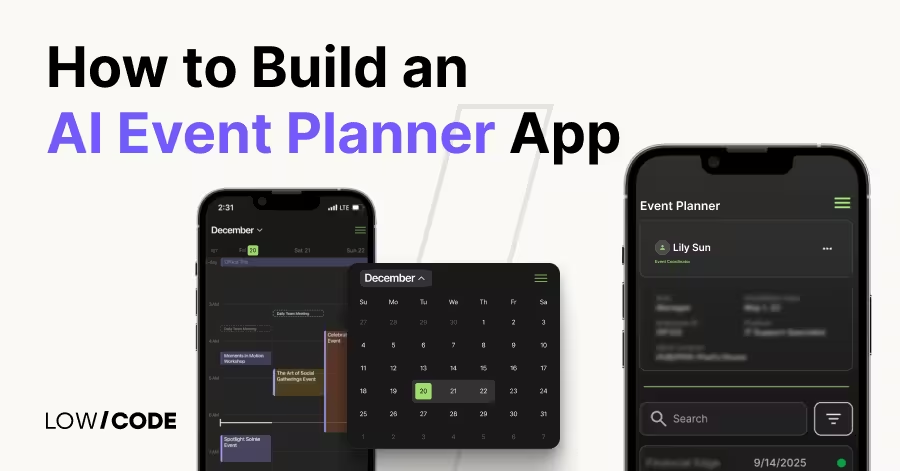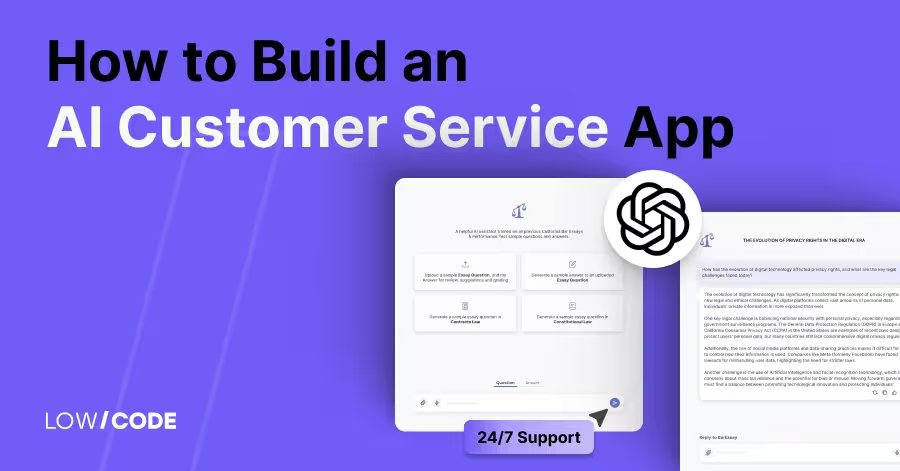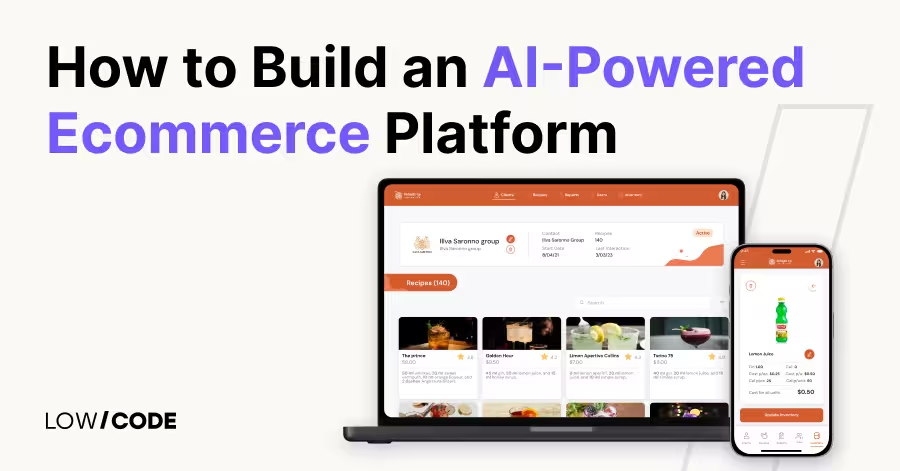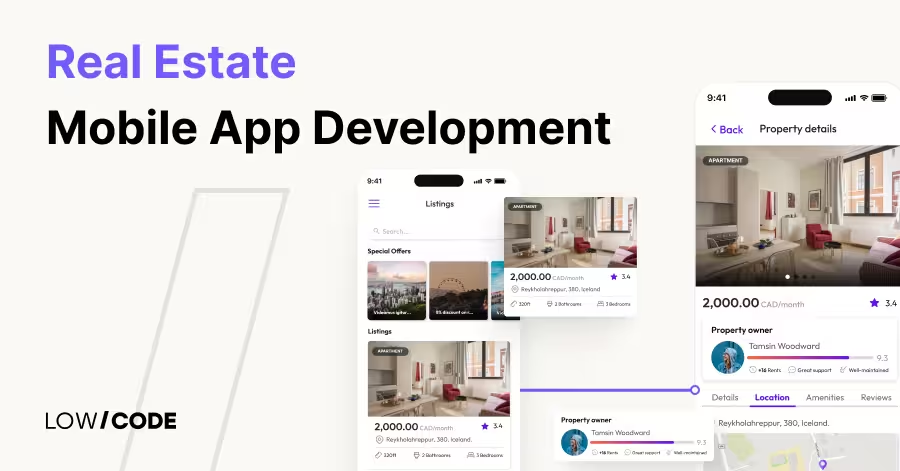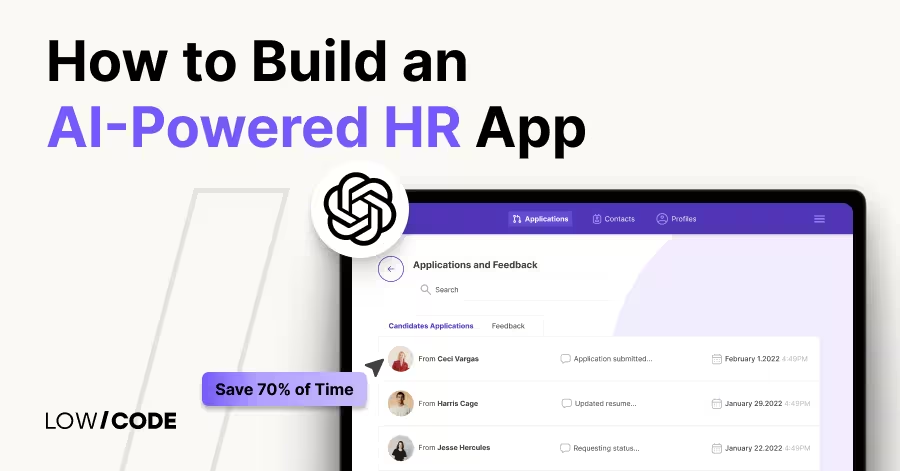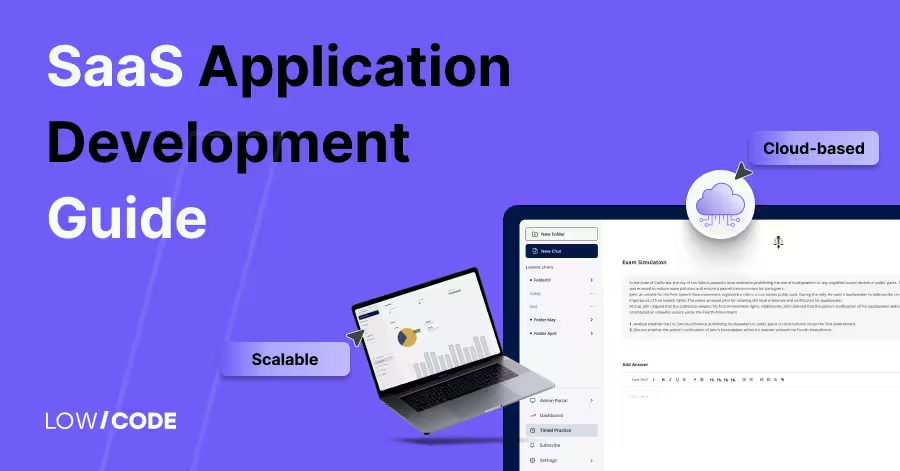Warehouse Management App Development Guide
17 min
read
Learn how to build a custom warehouse management application with key features, development steps, costs, and future trends explained
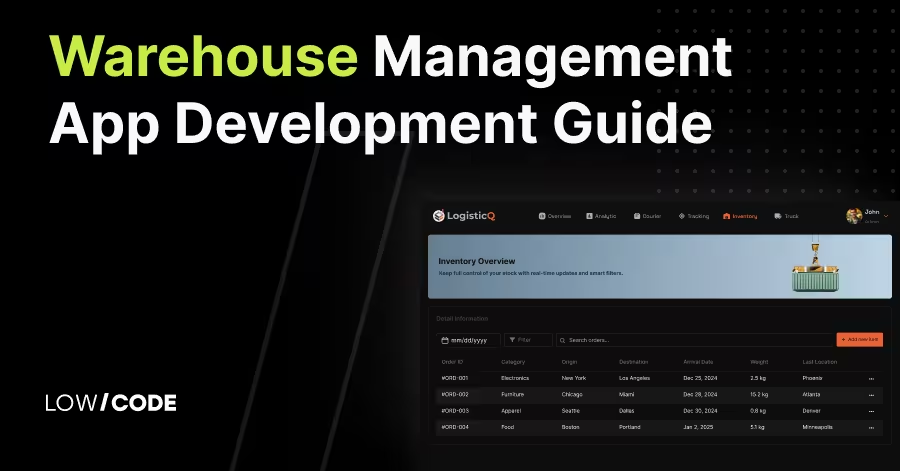
What is a Warehouse Management Application?
A Warehouse Management System (WMS) is software designed to manage and optimize warehouse operations. It controls how goods are received, stored, tracked, and shipped, ensuring accuracy and efficiency in daily activities.
By automating key processes, a WMS helps reduce errors and improves order fulfillment speed.
- Manage inventory levels and product movement in real time
- Improve daily workflows such as picking, packing, and shipping
- Support better space utilization and faster order processing
- Provide data insights for smarter warehouse decisions
Unlike other systems, a WMS focuses on warehouse processes, a WES manages real-time execution, and an ERP oversees the wider business, including finance and supply chain. A WMS remains the core tool for warehouse efficiency.
Why Businesses Need a Custom Warehouse Management App
Many businesses struggle with generic warehouse management systems because pre-built tools cannot always meet their unique needs.
A custom WMS ensures the software matches specific workflows, industry requirements, and long-term growth goals.
- Limitations of off-the-shelf WMS solutions
Standard WMS software often includes unnecessary features while missing critical functions. It can be rigid, difficult to customize, and may not integrate smoothly with existing business systems. - Unique workflows, scalability, and flexibility
Every warehouse has different processes, from order handling to storage methods. A custom WMS adapts to these workflows, scales as the business grows, and remains flexible to support changing demands. - Long-term cost benefits of custom WMS
While initial development costs may be higher, a tailored system reduces inefficiencies, minimizes errors, and eliminates recurring license fees, offering better return on investment over time. - Comparison of custom vs pre-built software
Custom apps align with business goals and grow alongside operations, while pre-built solutions may create long-term limitations. For companies with complex operations, custom WMS delivers greater efficiency and sustainability.
A custom warehouse management app is an investment in long-term performance and competitive advantage.
Read more | Healthcare App Development Guide
Core Warehouse Processes an App Should Automate
A warehouse management app is most valuable when it automates core processes that keep operations running smoothly. By reducing manual work, it increases accuracy, saves time, and improves overall efficiency.
- Receiving and storing inventory
Automating receiving ensures that every item is scanned and logged instantly. The app assigns storage locations, reducing misplaced stock and speeding up put-away. - Picking, packing, and shipping
Automated workflows guide staff through picking routes, confirm order accuracy during packing, and generate shipping labels. This minimizes errors and ensures timely deliveries. - Real-time tracking and visibility
With live dashboards, managers can track inventory levels, stock movements, and order progress instantly. This visibility reduces stockouts and overstocking. - Space optimization and location management
Smart allocation of shelf space and bin locations ensures maximum storage efficiency. The app can suggest ideal storage spots based on item size and demand. - Task coordination for efficiency
Automated task assignment helps distribute work evenly among staff, avoiding delays. Workers receive instructions directly in the app, improving productivity.
By automating these processes, a warehouse management app turns complex operations into seamless, error-free workflows.
Read more | SaaS Application Development Guide
Must-Have Features of a Warehouse Management Application
A warehouse management application should come with essential features that streamline daily operations while preparing the business for future growth. The right mix of tools ensures accuracy, speed, and security in every step of warehouse management.
- Inventory management and real-time updates
The system must track stock levels with instant updates. Automated alerts prevent shortages or overstocking and improve order accuracy. - Multi-warehouse and multi-language support
For businesses operating across locations, multi-warehouse support ensures centralized visibility. Multi-language features make the app accessible for diverse workforces. - Barcode, RFID, and IoT integration
Scanning technologies like barcodes and RFID reduce human error and speed up tracking. IoT sensors add another layer of visibility by monitoring stock conditions such as temperature. - Mobile app compatibility for warehouse staff
Workers on the floor should access data via smartphones or tablets, enabling faster receiving, picking, and shipping without depending on desktops. - Role-based access and security
Sensitive data must be protected with access controls. Role-based permissions ensure staff see only what they need, reducing security risks. - Advanced features like AI forecasting and analytics dashboards
Predictive analytics and dashboards help managers forecast demand, optimize space, and make data-driven decisions.
Together, these features create a robust, future-ready warehouse management application.
Read more | Best 7 Low-code Mobile App Builders
Best No-code Platforms for Warehouse Management App
Building a warehouse management app with no-code platforms allows businesses to save time and cost while still ensuring flexibility and scalability. Below are the best tools to consider.
1. Bubble
Bubble is ideal for developing web-based warehouse management apps that handle complex workflows. With its drag-and-drop editor, businesses can design dashboards for inventory tracking, task assignments, and reporting.
Bubble supports role-based access, barcode integrations through APIs, and can connect with EHR or ERP systems for seamless data flow. Its scalability makes it suitable for multi-warehouse operations.
Bubble also offers HIPAA and enterprise-level hosting options, ensuring data protection. For companies that need custom workflows, automation, and analytics dashboards, Bubble provides a strong no-code foundation without sacrificing advanced functionality.
Read more | No-code Agency vs In-house teams
2. Glide
Glide is perfect for businesses that want lightweight warehouse apps quickly. It converts spreadsheets into mobile-friendly apps, making it ideal for small warehouses or startups. Staff can update inventory, log shipments, or check stock levels directly from their phones.
Glide supports barcode scanning and works offline, which is valuable in warehouse environments. While not built for heavy compliance or complex integrations, it excels at internal tools for task tracking, space allocation, and simple order management.
Glide is best for fast deployment and small teams that prioritize ease of use over deep customization.
Read more | No-code Agency vs traditional Agency
3. FlutterFlow
FlutterFlow is well-suited for building native mobile apps for warehouse staff. It combines a visual editor with the power of Google’s Flutter framework, offering smooth performance and offline functionality. This makes it excellent for real-time inventory scanning, RFID integration, and warehouse task coordination.
FlutterFlow apps can connect to APIs and databases, enabling integration with ERP or shipping platforms. Its ability to handle secure logins and role-based permissions also supports team collaboration.
FlutterFlow is the right choice for businesses that want mobile-first apps with advanced functionality and scalability, without the long timelines of traditional development.
Read moe | What is Vibe Coding?
4. n8n / Zapier / Make
Automation platforms like n8n, Zapier, and Make are essential for connecting warehouse apps with other business systems. They streamline workflows such as syncing stock data with ERP, sending automatic alerts when inventory drops, or generating purchase orders.
For example, a warehouse app built in Bubble or FlutterFlow can use Make to integrate with shipping carriers or accounting systems. These tools reduce manual work and improve efficiency without coding.
They are best for businesses that want real-time automation between multiple apps, ensuring that data stays accurate across sales, inventory, and logistics systems.
Read more | How to Build AI HR App
5. Airtable (as a Database)
Airtable works as a powerful backend database for warehouse apps. It stores inventory records, shipment logs, and supplier details in an easy-to-manage spreadsheet-like interface. Paired with tools like Bubble, Glide, or FlutterFlow, Airtable becomes the central data source for warehouse operations.
It supports API connections, role-based access, and real-time updates, making it suitable for tracking thousands of items. While not natively HIPAA-compliant, it can be secured with enterprise plans and integrations.
Airtable is an excellent choice for businesses that want a flexible, no-code-friendly database that scales with their warehouse management system.
Read more | How to Build an AI App for Customer Service
Step-by-Step Process for Warehouse Management Application Development
Developing a warehouse management app requires a structured process to ensure scalability, security, and usability. Each stage builds on the previous one, ensuring the final solution is practical, efficient, and aligned with business goals.
Requirement Gathering and Business Analysis
The process begins with understanding how the warehouse currently operates. No two warehouses are the same, so mapping out needs prevents wasted development.
- Identify issues such as slow picking, misplaced items, or poor reporting
- Interview warehouse staff, managers, and stakeholders to gather insights
- Define must-have features for the first version and advanced features for scaling
Thorough requirement gathering ensures the app solves real challenges and avoids unnecessary complexity, creating a strong foundation for success.
Choose the Right No-code Platform
Platform selection impacts cost, speed, and future flexibility. A well-matched tool ensures your app can handle both current workflows and future scaling.
- Bubble works best for complex dashboards, role-based access, and workflow automation
- FlutterFlow is ideal for native mobile apps with scanning and offline functionality
- Glide suits internal dashboards built directly from spreadsheets for smaller warehouses
- Airtable and Zapier/Make/n8n support backend storage and process automation
Choosing the right platform mix allows businesses to scale operations smoothly without rebuilding from scratch, ensuring long-term adaptability.
Partner with Experts like LowCode Agency
Even with no-code tools, building a warehouse management app requires expertise in design, workflows, and integrations. This is where the right partner matters.
- LowCode Agency has built over 350 no-code apps across industries
- Our team specializes in Bubble, FlutterFlow, Glide, and automation tools
- We have expert designers who create user-friendly interfaces to encourage staff adoption.
- We also provide optional ongoing support for feature expansion to ensure the app stays updated and scalable.
By working with a team that combines technical skill and warehouse understanding, businesses gain a long-term technology partner, not just developers.
System Integration (ERP, CRM, E-commerce, Accounting)
A warehouse management app must integrate with other systems to provide full visibility across business operations. Without integration, data silos create inefficiency.
- ERP systems sync supply chain, procurement, and stock data
- CRM platforms provide customer details directly into warehouse workflows
- E-commerce platforms like Shopify sync orders and update stock automatically
- Accounting tools connect billing, invoices, and cost tracking in real time
When systems are linked, warehouses operate more efficiently, and managers access accurate data instantly. Seamless integration makes the app a true hub of operations.
Testing and Quality Assurance
Testing is critical to ensure the app functions correctly in demanding warehouse conditions. It goes beyond technical checks to include real-world use.
- Functional testing validates workflows like receiving, packing, and shipping
- Security testing ensures compliance with business data protection standards
- Performance testing checks speed under high transaction loads
- User acceptance testing gathers feedback from staff working in live conditions
Rigorous QA ensures the app works reliably, prevents costly downtime, and is ready for daily warehouse operations.
Deployment, Training, and User Adoption
An app is only effective if staff use it confidently. Deployment must be supported by structured training and change management.
- Conduct role-based training for managers, pickers, and administrative staff
- Provide onboarding guides, video tutorials, and support resources
- Create feedback channels so staff can report issues or suggest improvements
- Monitor adoption rates and adjust workflows for smoother use
Proper training and adoption strategies ensure employees embrace the app fully. This maximizes efficiency gains and delivers a strong return on investment.
Read more | Web Apps vs Native Apps | Key Differences Explained
Challenges in Developing a Warehouse Management App
Building a warehouse management app is not without its difficulties. Businesses often face operational, technical, and financial hurdles that must be addressed carefully to ensure smooth adoption and long-term success.
- Migrating data from legacy systems
Many warehouses still rely on outdated systems or spreadsheets. Moving this data into a modern WMS requires careful mapping and validation to avoid errors and inconsistencies. - Managing downtime during implementation
Warehouse operations cannot stop, even during system changes. Minimizing downtime and planning phased rollouts is crucial to prevent disruptions in daily workflows. - Handling user resistance and training
Staff may resist new tools due to fear of complexity. Structured training, role-based onboarding, and simple user interfaces help reduce resistance. - Balancing scalability with costs
Businesses must ensure the app scales as operations grow while controlling development and maintenance costs. No-code platforms help strike this balance effectively. - Ensuring compliance and audit trails
Warehouses handling sensitive data must maintain compliance with industry standards. A WMS should provide secure access controls and detailed audit trails.
Addressing these challenges proactively ensures smoother adoption and sets the foundation for long-term operational efficiency.
Read more | How to Build an AI app for the Restaurant Business
Future Trends in Warehouse Management Applications
Warehouse management applications are evolving rapidly as new technologies reshape supply chain operations. Businesses adopting these innovations will gain competitive advantages in speed, accuracy, and sustainability.
- AI-powered demand forecasting
Artificial intelligence enables more accurate predictions of product demand by analyzing historical sales, seasonality, and external factors. This helps reduce overstocking, avoid stockouts, and optimize inventory levels. - Robotics and automation integration
WMS platforms are increasingly connected with automated guided vehicles (AGVs) and robotic picking systems. Integration reduces manual labor, speeds up order fulfillment, and improves accuracy in repetitive tasks. - Vision systems for quality control
Advanced vision technology allows real-time quality checks during receiving, packing, and shipping. Apps integrated with vision systems can identify damaged goods or mislabels, reducing returns and improving customer satisfaction. - Sustainability and green logistics
Modern warehouse management apps support eco-friendly operations through optimized route planning, reduced paper use, and energy-efficient workflows. Tracking carbon emissions and waste reduction metrics is becoming a standard feature.
Together, these trends signal a shift toward smarter, automated, and sustainable warehouses that rely heavily on data-driven insights and integrated technologies.
Conclusion
A custom warehouse management application gives businesses the ability to streamline operations, reduce errors, and improve efficiency. Unlike generic tools, a tailored WMS adapts to unique workflows, integrates with existing systems, and scales as the business grows.
With features like real-time tracking, automation, and advanced analytics, it not only solves current challenges but also prepares warehouses for future demands such as AI, robotics, and sustainability.
👉 Reach out to LowCode Agency to build your scalable, future-ready warehouse management app today.
Created on
October 22, 2025
. Last updated on
December 9, 2025
.

FAQs
What features should a warehouse management app include?
How much does it cost to build a warehouse management system?
Can a WMS integrate with ERP and e-commerce platforms?
How long does it take to develop a custom WMS?
What technologies are best for WMS development?
What are the risks of using off-the-shelf WMS instead of custom?





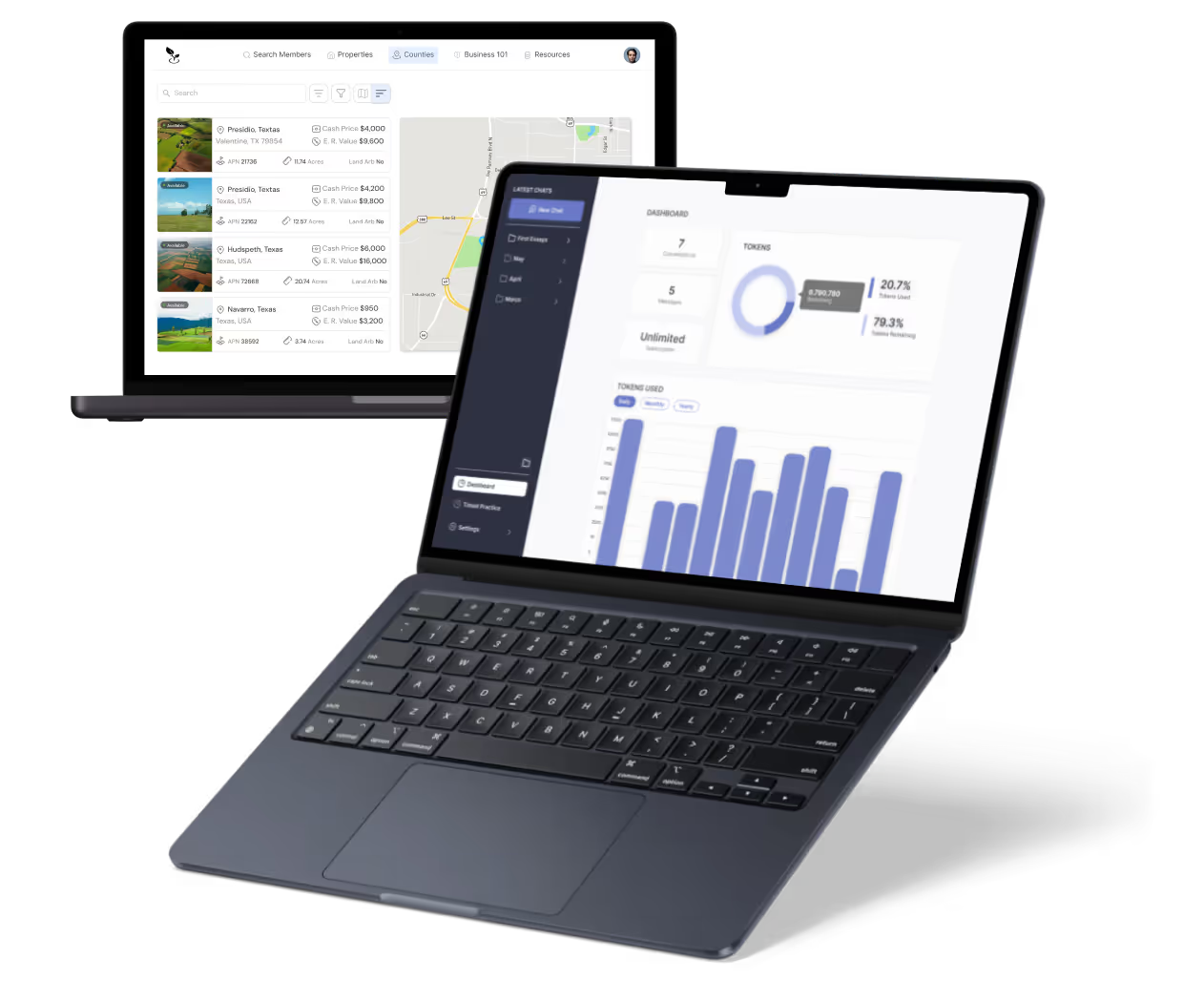

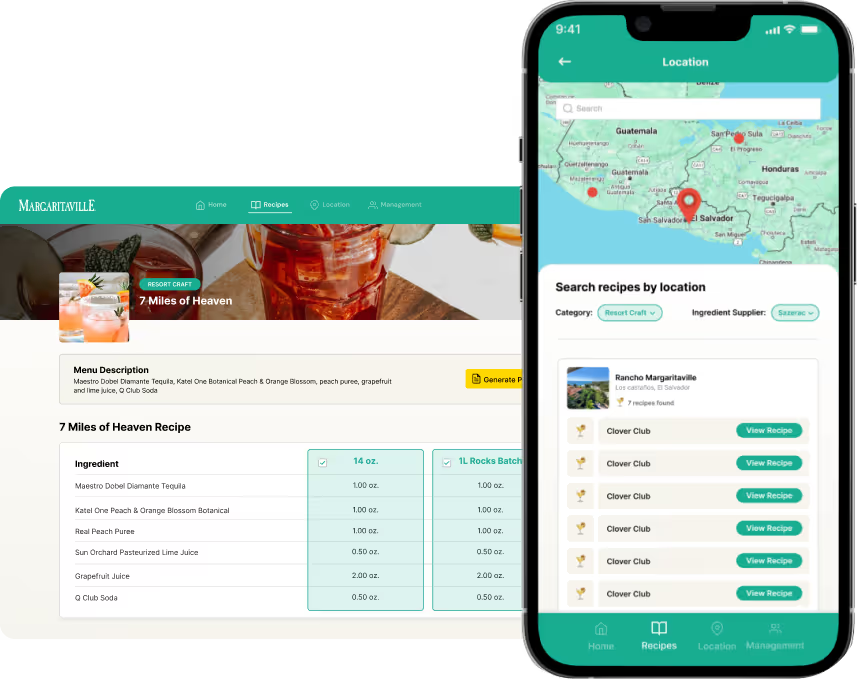
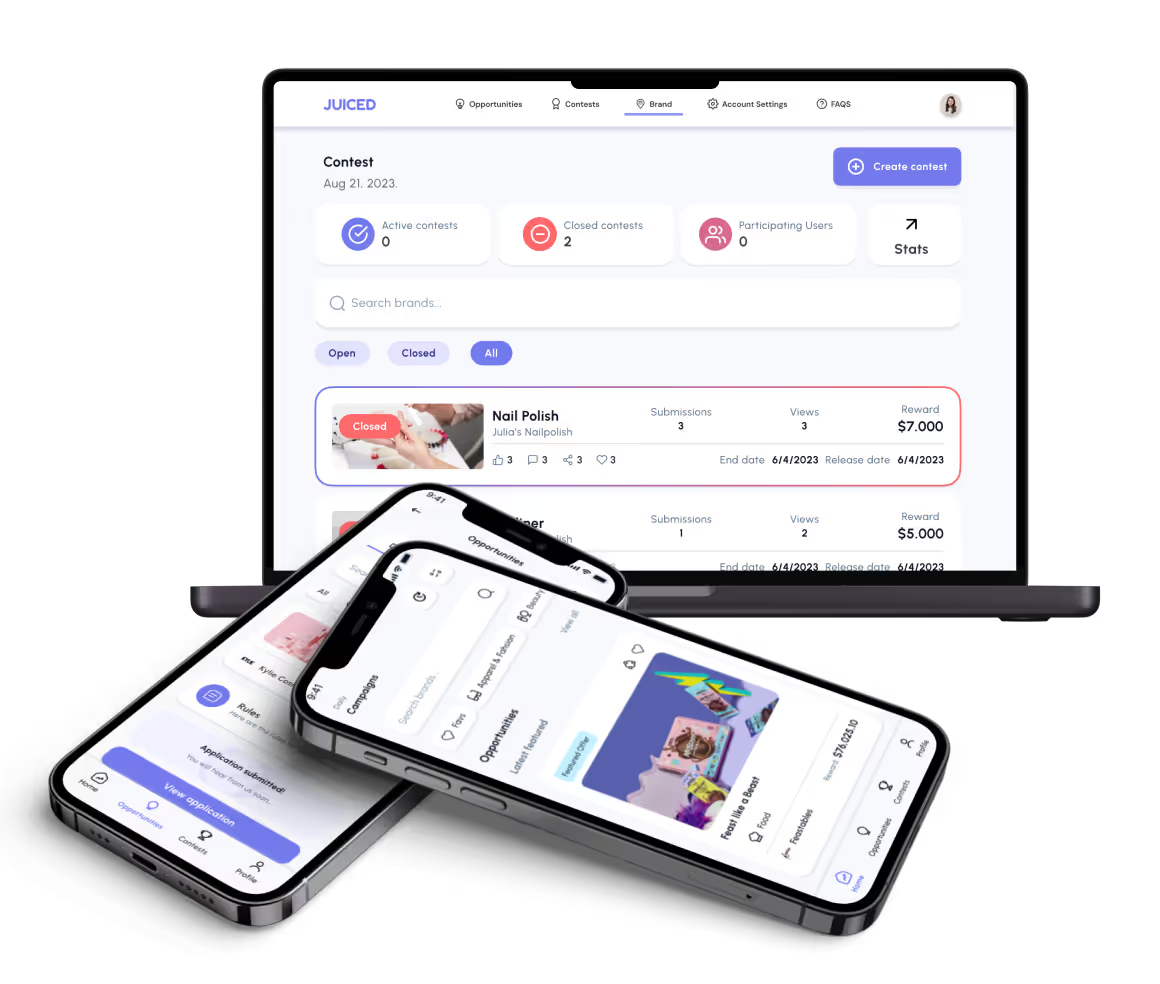
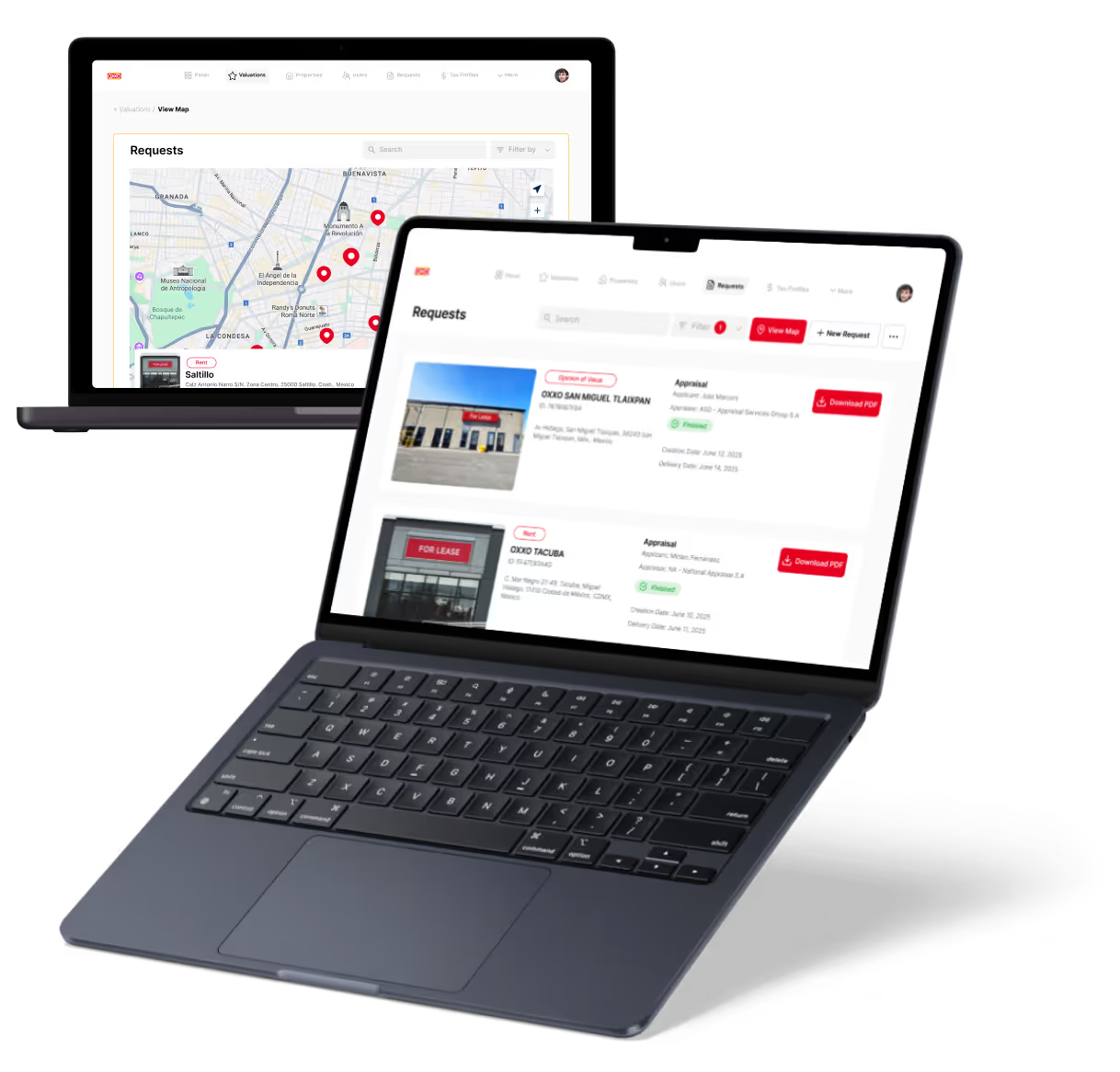
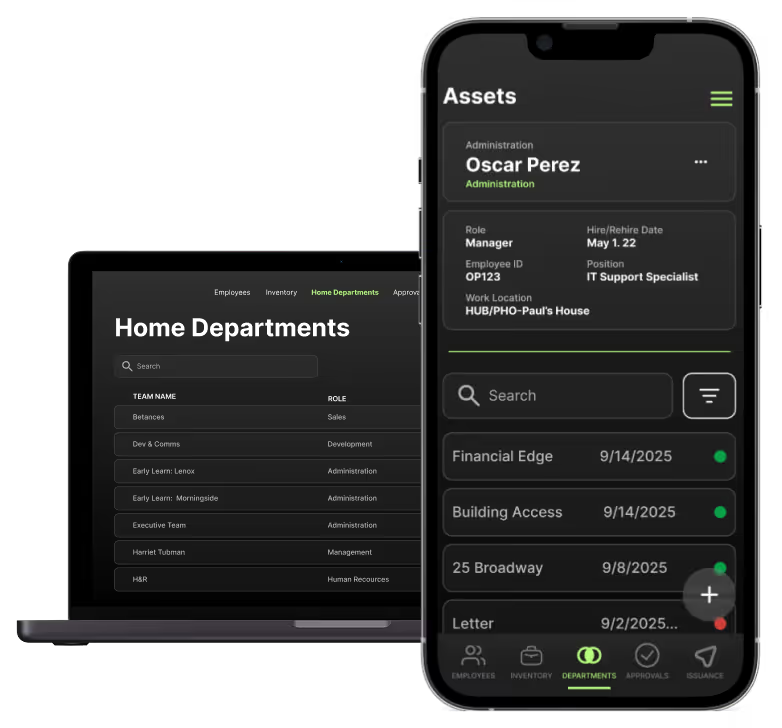
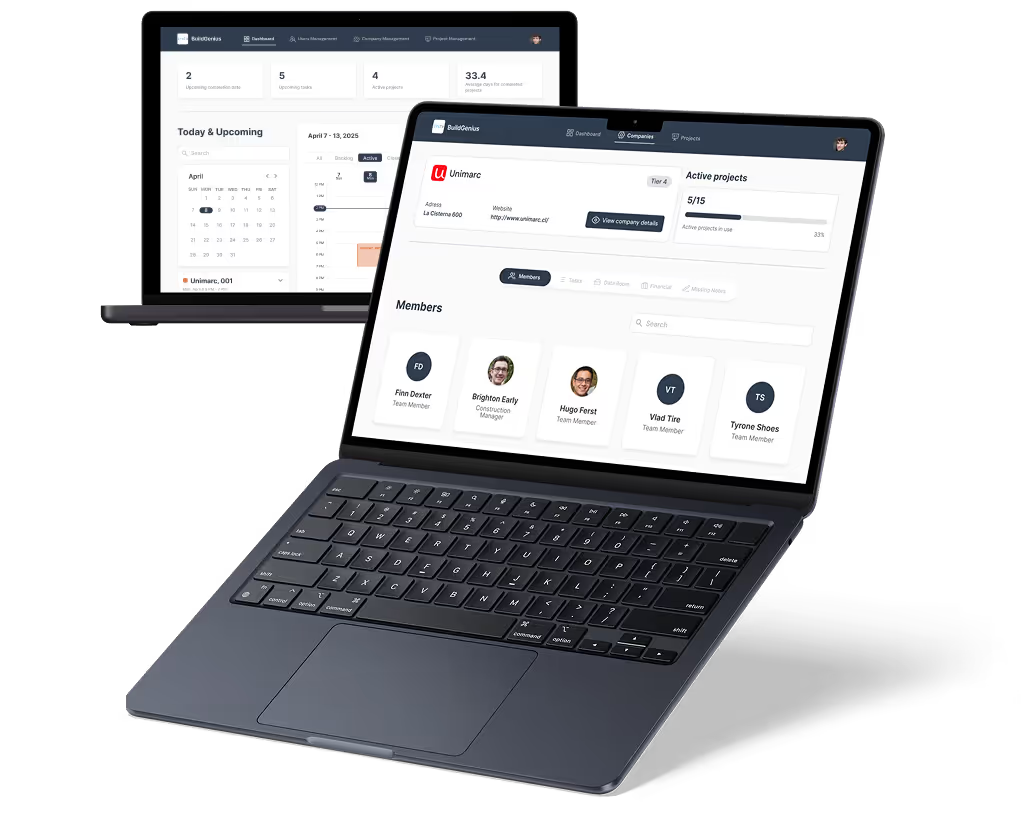
%20(Custom).avif)



